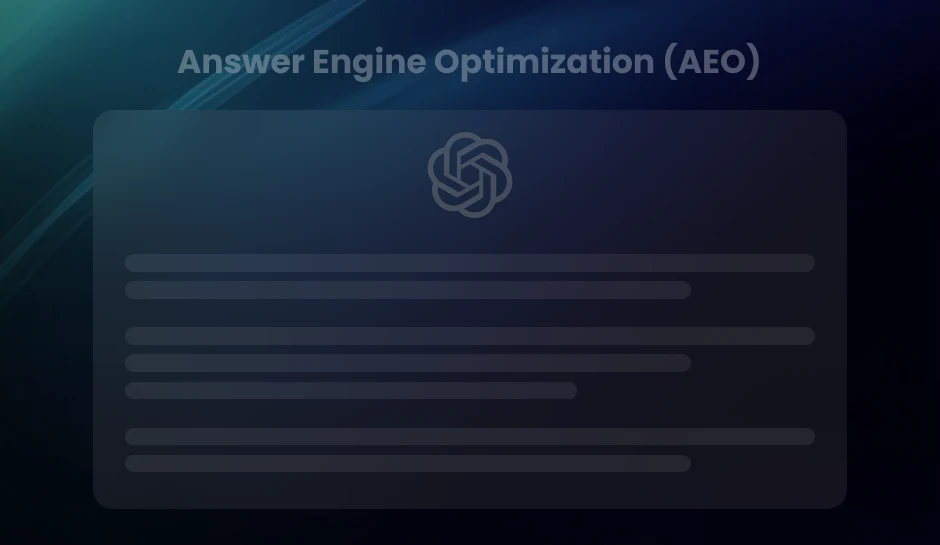
Google Attribution: True Value of Your Marketing Efforts
Google Attribution fills this crucial need by providing insights into the customer journey, enabling marketers to identify which touchpoints drive conversions. With precise attribution data, businesses can optimize their strategies, allocate resources effectively, and maximize returns on investment. In this blog, we discuss the essential role of Google Attribution in optimizing marketing strategies and maximizing returns on investment.
Understanding the journey your customer takes before conversion is important to holding a roadmap to success. Attribution is the analytical practice of assigning credit to the various marketing touchpoints a customer encounters along their path to purchase. Its significance cannot be overstated; with spot-on attribution, companies can distribute their marketing budgets more effectively, optimize campaigns, and increase ROI. In this discussion, we will delve into the power of First click attributio to Last click Attribution, and reveal how precise measurements of marketing interactions can illuminate the influence of each ad, keyword, and campaign on consumer behavior, empowering businesses to make data-driven decisions that propel them toward their goals.
The Role of Google in Shaping Attribution
Google’s expansive reach and continuous innovation have significantly influenced the analytics and attribution landscape, forging new paths for marketers to understand and optimize their campaigns. In the vast, data-driven world of digital marketing, attribution serves as the cornerstone for measuring success, and Google has been at the forefront of this transformative field.
With an array of tools like Google Analytics, Google Ads, and the recent Google Attribution, Google has shaped how businesses track, analyze, and attribute conversions. Google’s platforms have become synonymous with web analytics and attribution, helping marketers make informed decisions based on comprehensive data sets.
How Google’s Tools Have Evolved to Accommodate Changing Attribution Needs
- Increased granularity:
- Machine learning:
- Cross-device and cross-channel tracking:
- Data integration:
Detailed data insights enable precise analysis of user interactions.
Advanced algorithms provide predictive analytics for understanding consumer behavior.
Seamless user experience tracking ensures accurate conversion attribution.
Unified view of the customer journey simplifies analysis across Google products.
Refining Customer Journey Insights with Multi-Touch Attribution in Google Attribution
Google’s approach to Multi-Touch Attribution (MTA) represents a significant shift from traditional single-click attribution models. By factoring in multiple user interactions, Google Attribution acknowledges the complexity of the consumer decision-making process. This acknowledgment is pivotal for advertisers who seek a more nuanced understanding of their campaigns’ performance.
The Importance of Considering Multiple Clicks and Interactions
- Comprehensive View:
- Optimized Spend:
- Customer-Centric Strategies:
MTA provides a holistic view of the customer’s path to conversion, considering the diverse channels and touchpoints influencing their decision.
By understanding the role of each interaction, marketers can optimize their ad spend across channels and tactics.
Leveraging MTA data fosters customer-centric marketing strategies with tailored messages that align with user behaviors and preferences.
Integration of Google Ads and Google Analytics for Cohesive Data Analysis
Google Ads integration with Google Analytics is a powerful combination that significantly enhances attribution data. By linking these two platforms, marketers can view their performance metrics more holistically, which is essential for making informed decisions about their advertising strategies.

Conversion Tracking in Google Attribution
Understanding your marketing impact is vital, and conversion tracking lies at its core. Google Attribution simplifies this process, enabling seamless monitoring across various Google platforms. Let’s explore its mechanisms and significance.
Methods for Tracking Conversions:
- Website actions:
- Phone calls:
- App installs and in-app actions:
- Imported data:
Tracking purchases, form submissions, and interactions.
Monitoring calls from ads or websites.
Tracking app-related conversions.
Integrating offline or external digital conversions.
These methods, integrated within Google Ads and Analytics, provide a detailed view of user interactions.
Marketing ROI Reinforced by Google’s Attribution Data
Google Attribution revolutionizes ROI calculation and interpretation, offering marketers granular insights into channel effectiveness. Leveraging this data, businesses refine strategies, ensuring every dollar spent drives profitable growth.
Challenges and Solutions
- Challenges 1:
- Solutions:
- Challenge 2:
- Solution:
Quantifying marketing success faces reliability and data interpretation hurdles:
With diverse customer interactions, accurately attributing conversions to specific touchpoints is challenging. Traditional attribution models often lack the granularity needed to capture the complexity of modern consumer journeys.
Google Attribution provides a comprehensive view of the customer journey, enabling accurate attribution of conversions across multiple touchpoints. Advanced attribution algorithms leverage machine learning to analyze vast datasets, providing actionable insights into the effectiveness of marketing efforts.
Determining the weighted impact of multiple touchpoints on conversions is complex:
Understanding the relative contribution of each marketing touchpoint to the final conversion is crucial for optimizing marketing strategies. Without clear attribution, it’s difficult to allocate resources effectively and prioritize high-impact channels.
Google Attribution offers advanced attribution models that assign credit to each touchpoint based on its contribution to conversions. By analyzing the weighted impact of different touchpoints, marketers gain a deeper understanding of the customer journey and can adjust their strategies accordingly.
Privacy, Data Protection, and the Cookieless Future
The digital marketing landscape is undergoing a significant transformation with privacy and data protection taking center stage. As we move towards a cookieless future, Google Attribution must evolve to ensure compliance with stringent privacy regulations while still providing advertisers with valuable insights.
Impact of Privacy Regulations on Attribution
Recent privacy legislations like GDPR and CCPA are reshaping how personal data is collected and used online. This shift towards enhanced consumer privacy impacts traditional tracking and attribution methods. Advertisers relying on third-party cookies need to pivot their strategies to adapt to a world where user consent is paramount.
Google’s Initiatives for a Balanced Ecosystem
Google is leading efforts to reconcile user privacy with data-driven advertising. Initiatives like the Privacy Sandbox and Federated Learning of Cohorts (FLoC) prioritize user anonymity while providing advertisers with valuable marketing insights.
- Federated Learning of Cohorts (FLoC):
- Privacy Sandbox:
Designed to replace traditional cookies, FLoC groups users with similar interests without using individual browsing history.
This proposal aims to create secure environments for personalization while preventing individual user tracking.
As the industry moves towards a cookieless future, Google Attribution will help marketers navigate this new terrain. Emphasis will be on first-party data, anonymized datasets, and privacy-compliant models. Google’s investment in technologies preserving user privacy while delivering insights indicates a future where attribution accuracy and privacy coexist harmoniously.
Ad Performance Measurement with Google’s Solutions
Understanding ad campaign performance is vital for maximizing ROI. Google Attribution offers essential tools and metrics to assess efficacy and inform strategic decisions, helping marketers understand conversion drivers.
Key Tools and Metrics for Assessing Ad Performance
- Conversion Tracking:
- Multi-Channel Funnels:
- Model Comparison Tool:
Stay informed about the actions customers take after clicking on your ads, helping you understand the direct impact of your campaigns.
Gain insight into how various marketing channels work together and contribute to conversions over time.
Compare how different attribution models distribute conversion credit, offering valuable perspectives on your marketing mix.
Optimizing Campaigns with Google’s Data
With a wealth of data at your fingertips, Google Attribution simplifies the process of optimizing your ad campaigns through Google Tags. By critically analyzing performance metrics, marketers can make data-driven adjustments to their strategies that enhance efficiency and effectiveness.
- A/B Testing:
- Attribution Modeling:
- Bid Adjustments:
Run experiments to test different ad elements, such as copy or visuals, and use Google’s insights to determine which variations resonate best with your audience.
Shift your strategy based on the insights from various attribution models, focusing on the touchpoints that contribute most to conversions.
Utilize data to inform your bid strategies, ensuring you compete effectively for the most valuable ad placements.
Campaign Optimization through Iterative Learning
Mastering campaign performance is an ongoing process requiring constant refinement and adjustment. The introduction of Google attribution has revolutionized this process, providing marketers with a goldmine of data to fuel their optimization efforts.
Steps for Applying Data Insights to Enhance Marketing Strategies
Putting attribution data to work involves a strategic approach:
- Analyze:
- Identify:
- Test:
- Implement:
- Measure:
Examine attribution data to pinpoint top-performing channels and tactics.
Detect engagement patterns and areas for improvement.
Set up A/B tests to validate campaign enhancements.
Roll out positive changes iteratively.
Monitor metrics for improved performance and higher ROI.
Incorporating these steps into your campaign’s lifecycle guarantees that every decision is data-driven, leading to smarter investments and more effective marketing strategies.
Preparing for Attribution Challenges in a Cookieless World
- Tracking Disruption:
- Attribution Complexity:
- Privacy Concerns:
- Personalization Limitations:
- Data Collection Methods:
Without cookies, traditional methods of tracking user behavior and engagement will be disrupted, making it difficult to gather comprehensive data on customer interactions.
Attribution models rely heavily on cookies to attribute conversions to specific touchpoints in the customer journey. Without cookies, accurately attributing sales or conversions to marketing efforts becomes more complex.
With increasing emphasis on privacy regulations and user consent, marketers must find ways to track and analyze data while respecting user privacy preferences, which can be challenging in a cookieless environment.
Cookies have been essential for delivering personalized experiences to users. In a cookieless world, marketers may face limitations in delivering tailored content and ads based on user preferences and behavior.
Marketers will need to explore alternative methods of data collection and analysis that comply with privacy regulations and still provide valuable insights into customer behavior and preferences.
Key Takeaways
- The shift to a cookieless world disrupts traditional tracking methods, posing challenges in gathering comprehensive data on customer interactions.
- Accurately attributing conversions becomes more complex without cookies, impacting the effectiveness of attribution models.
- Marketers must navigate increasing privacy regulations while respecting user privacy preferences.
- The absence of cookies may limit marketers’ ability to deliver personalized experiences, affecting the effectiveness of targeted content and ads.
Conclusion
As the digital landscape evolves into a cookieless world, marketers face challenges in tracking, attribution, privacy, and personalization. Adapting to these changes requires innovative approaches and technologies to ensure effective marketing strategies. By embracing these challenges and leveraging new solutions, marketers can continue to deliver impactful campaigns. For personalized consultation on navigating the cookieless future
Wish to Unlock Success With Google Attribution Talk to Us!
We would love to meet you wherever you are in your Attribution Path. Just write to us at info@diggrowth.com and we’ll get back to you.
Ready to get started?
Increase your marketing ROI by 30% with custom dashboards & reports that present a clear picture of marketing effectiveness
Start Free Trial
Experience Premium Marketing Analytics At Budget-Friendly Pricing.

Learn how you can accurately measure return on marketing investment.
Additional Resources
Don’t Let AI Break Your Brand: What Every CMO Should Know
AI isn’t just another marketing tool. It’s changing...
Read full post postFrom Demos to Deployment: Why MCP Is the Foundation of Agentic AI
A quiet revolution is unfolding in AI. And...
Read full post postAnswer Engine Optimization (AEO): The New Frontier of SEO in 2025
As digital experiences continue to evolve, so does...
Read full post postFAQ's
Google Attribution provides insights into marketing effectiveness, aiding in budget allocation and campaign optimization.
Challenges include disrupted tracking methods, complex attribution without cookies, and limitations in personalization.
Prioritize user consent, adopt privacy-compliant methods, and leverage tools like Google's Privacy Sandbox for anonymized data analysis.


